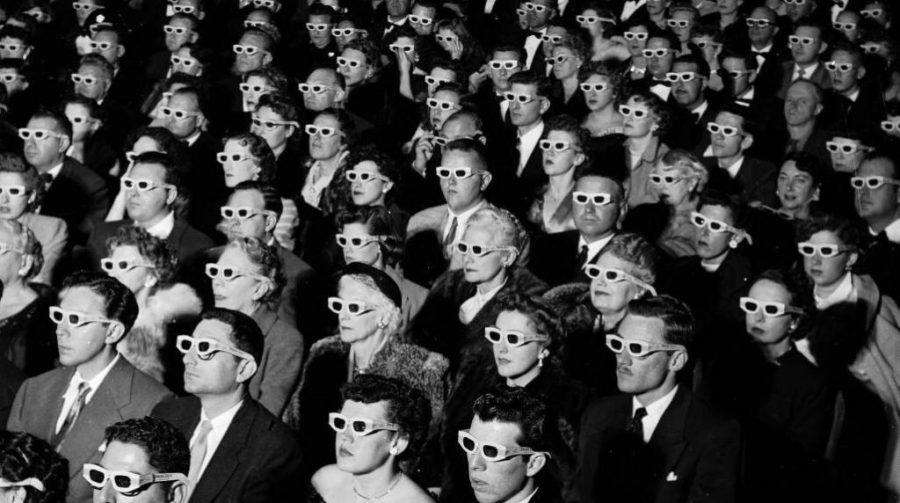The idea of the Culture Industry and mass culture have been prevalent for decades due to intellectuals questioning the reality of what mass culture would look like and what the consequences would be if it exists in some capacity. When writing about society as a whole entity, Theodor Adorno and Max Horkheimer broke apart society into three structural elements. Those elements are economic, political, and cultural forms of life. While “while cultural forms of life” can mean several different things, the aspects that were focused on how different aspects of culture can be used to control masses. When using the word “cultural industry” the word industry is referring to the selling or commercialization of culture as a commodity.
When looking at the way the cultural industry theory was used by Adorno and Horkheimer, the two writers say that the model creates a passive audience. That those who are absorbing sources of information or advertising are unable to think for themselves and are controlled by those in power. That control causes them to spend money and support whatever they are told to from the higher powers controlling (media organizations, large corporations, etc.) These uses of power are hidden by the sense of satisfaction that is manufactured for the consumer to feel when being put through the persuasion and societal pressure to consume specific products or businesses. Meaning the media is not tailoring individuals, they are pushing an idea of what an individual should be and masses are filtering themselves into that idea and becoming similar and sharing culture rather than mass differences.
Adorno and Horkhemier specify that the idea of the culture industry is not anti-enlightenment or not progressive. They suggest instead the culture industry keeps up with the progression of societies. This can be seen today when discussing current examples of the culture industry such as mass trends pushed out through social platforms such as Tik Tok or Instagram. On these platforms there will be mass amounts of posts on specific products that, with the algorithm promoting it, will be pushed out to large numbers of people in order to persuade them to purchase products and join the mass culture. Being fed specific products over others, then with the societal pressure to follow others, impedes individual thought and personal opinions. This concept and action snowball and create a process that individuals can become “stuck in.” Basically individuals are swayed by the specific content they are consuming and the way the content presents itself as representing mass majorities. When perceiving the actions and choices of others are normal this promotes a consumer to follow those ideas and not think for themselves. This is hard to call deception outright, but it contains a lot of similarities to something being deceptive. The process is convincing people to be a part of the mass culture and causing them to have no reason to question it. The image below is a representation of “Tik Tok Shop” which is a place where users can purchase items seen in videos on the platform. This helps the individual disregard their own opinion or want to find products to purchase since they are provided so easily to them within the app.



Hi Caleigh! This analysis applies Adorno and Horkheimer’s culture industry theory well to current social media trends. It well illustrates how platforms like TikTok perpetuate mass conformity through algorithms and consumerism coercion, showing how cultural consumers give up more control as cultural consumption is made easy and insidiously manipulative under digital capitalism. Thank you for sharing with us.
Hello Caleigh.I agree with your point because I also used Adorno and Horkheimer’s theory in my analysis. I think this analysis effectively combines their ideas to explain how the culture industry is produced and sold as a commodity in today’s context, while algorithms further trap people in passive consumption.
This article presents the core viewpoints of Adorno and Hawkheimer’s “cultural industry” theory in a very clear and organized manner.At the same time, it is closely related to reality. Taking the algorithm recommendation and platform shopping function of TikTok and Instagram as examples, it shows the view that “cultural industry evolves with social development”, indicating that consumers’ choices will be subtly controlled by media communication. This is an interesting and meaningful work,thanks!
Hey Caleigh,
I really enjoyed reading your blog post on Adorno and Horkheimer’s culture industry theory and how it applies to modern media trends. I found it interesting how you tied this theory to mass trends on social media. I fully agree with your perspective on how we as consumers are being directed into purchasing certain products and even pressured into following trends. It fascinates me how mass trends produce global mass culture and create an illusion of belonging. A specific example of this would be teenagers dressing up in a similar way and using the same lingo cross-culturally which makes them feel belonging to a certain community, even if this community is first established virtually.
Most individuals in our contemporary society highly value freedom and the right to make decisions, but neglect to realise the impact mass thinking has on one’s opinions. Adorno and Horkheimer state that people are fed with an illusion of having a choice and are made comfortable with consuming entertainment (2006). As long as we are unaware of this phenomena, this is fully applicable to our lives. It is crucial to address the effect of mass media on our conscious and subconscious choices because only through this we can become more critical of our decisions and align them more with our values and beliefs.
Reference
Adorno, Th. & Horkheimer, M. (2006). ‘The Culture Industry: Enlightenment as Mass Deception’. iIn: Durham, M.G. & D. Kellner (2006), Media and Cultural Studies:Key Work, Malden, MA: Blackwell, [pp.41-72]